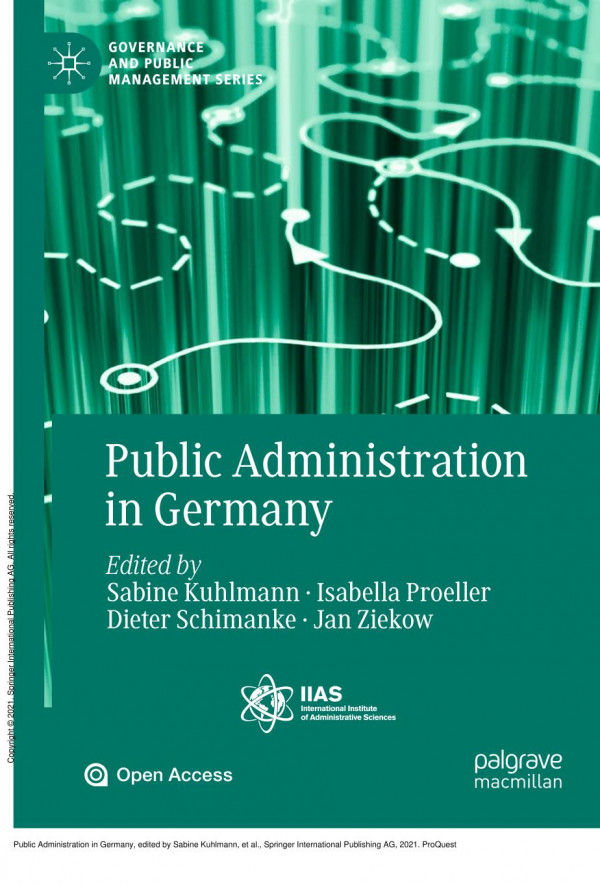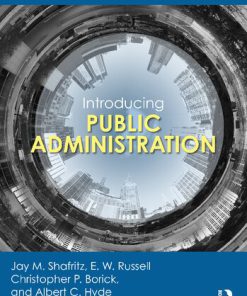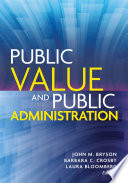Public Administration in Germany 1st Edition by Sabine Kuhlmann, Isabella Proeller, Dieter Schimanke, Jan Ziekow 3030536963 978-3030536961
$50.00 Original price was: $50.00.$25.00Current price is: $25.00.
Public Administration in Germany 1st Edition by Sabine Kuhlmann, Isabella Proeller, Dieter Schimanke, Jan Ziekow – Ebook PDF Instant Download/Delivery: 3030536963, 978-3030536961
Full download Public Administration in Germany 1st Edition after payment

Product details:
ISBN 10: 3030536963
ISBN 13: 978-3030536961
Author: Sabine Kuhlmann, Isabella Proeller, Dieter Schimanke, Jan Ziekow
This open access book presents a topical, comprehensive and differentiated analysis of Germany’s public administration and reforms. It provides an overview on key elements of German public administration at the federal, Länder and local levels of government as well as on current reform activities of the public sector. It examines the key institutional features of German public administration; the changing relationships between public administration, society and the private sector; the administrative reforms at different levels of the federal system and numerous sectors; and new challenges and modernization approaches like digitalization, Open Government and Better Regulation. Each chapter offers a combination of descriptive information and problem-oriented analysis, presenting key topical issues in Germany which are relevant to an international readership.
Public Administration in Germany 1st Table of contents:
Chapter 1: German Public Administration: Background and Key Issues
1 Introduction: Background and Approach of the Publication
2 Part I: German Public Administration in the Multilevel System
3 Part II: Politics, Procedures and Resources
4 Part III: Redrawing Structures, Boundaries and Service Delivery
5 Part IV: Modernising Processes and Enhancing Management Capacities
6 International Context and Lessons to Learn
References
Part I: German Public Administration in the Multilevel System
Chapter 2: Constitutional State and Public Administration
1 Introduction
2 Key Concepts of Public Law and Public Administration
2.1 The Principle of the Law-Governed State (Rechtsstaat)
2.2 The Constitutional State (Verfassungsstaat)
2.3 The Integration of the Rechtsstaat and the Verfassungsstaat in the European Union
2.4 Lessons Learned
3 The Constitutional Frame of Public Administration
3.1 Constitutional Principles
3.2 The Multilevel Administration of German Federalism
3.3 The Impact of Fundamental Rights on Public Administration
3.4 Lessons Learned
4 The Role of Judicial Review
4.1 The Right to an Effective Judicial Remedy
4.2 The Powers of the Constitutional Jurisdiction
4.3 The Jurisdictionalisation of Administrative and Constitutional Law
4.4 Lessons Learned
5 Constitutional Reform and Constitutional Change
6 Conclusion
References
Chapter 3: Administrative Federalism
1 Introduction
2 Historical Roots of German Administrative Federalism
3 Distribution of Responsibilities
4 Coordination and Cooperation: Making Administrative Federalism Work
5 Trends and Challenges.
6 Conclusion and Lessons Learned
References
Chapter 4: Europeanisation and German Public Administration
1 Introduction
2 The EU’s Striving to Extend Its Jurisdiction
3 The Principle of Member State Responsibility for Administering and Enforcing EU Law
4 To Avoid Discrepancies, Member States Implement EU Law to a Greater Degree than Is Actually Required
5 EU Court Rulings
6 Legal Remedy Provided by the National Administrative Courts
7 Lessons Learned
References
Chapter 5: Federal Administration
1 Introduction
2 The Formal Framework for the Federal Administration
3 Organisation of the Federal Administration: Ministries and Agencies
4 Practices of Coordination and Utilisation of Expertise
4.1 Levels and Patterns of Inter-ministerial Coordination
4.2 External Expertise in Inter-ministerial Coordination
5 The German Federal Administration as a Reluctant Yet Mostly Unconcerned Reformer
6 Lessons Learned
References
Chapter 6: The Federal Administration of Interior Affairs
1 Introduction: Federal Administration/State Administration
2 Exception: Federal Administration
3 Structure of the Federal Administration
4 The BMI and Its Executive Agencies
5 Supervision
6 Excursus: ‘Minister-Free Zones’
7 Central Service Provider: Federal Office of Administration
8 From Superior Federal Authority to Supreme Federal Authority: Federal Commissioner for Data Protection and Freedom of Information
9 Lessons Learned
References
Chapter 7: The Peculiarities of the Social Security Systems (Indirect State Administration)
1 The Welfare State, Its Programmes (Laws) and Entrenchment in Administrative Federalism
2 Areas of Social Benefits and Their Allocation Within the Administrative System of Germany.
3 The Special Status of the Social Security Systems and Their Relationship to the General Administrative System
3.1 The Legal Bases of the Public Institutions in the Social Security Systems
3.2 Oversight of the Social Security Systems
4 Lessons Learned
References
Chapter 8: The Administration of the Länder
1 Administrations of the Länder (Federal States) in the System of German Federalism
2 Basic Conditions for the Administrative Organisation
3 Basic Structures of the Administrations of the Länder
3.1 Direct Land Administration
3.1.1 Upper Administrative Level
3.1.2 Regional Meso Level
3.1.3 Lower State Authorities
3.2 Indirect Land Government
4 Personnel Structure and Administrative Culture
5 Lessons Learned
5.1 Structural Reforms: More than a Political Playground?
5.2 Prepared for the Future? Digitalisation as a Major Challenge
References
Chapter 9: Local Self-Government and Administration
1 Introduction
2 Cities, Counties and Municipalities
2.1 The Various Bodies of Local Self-Government
2.2 Population and Size of County-Free Cities, Counties and Municipalities Belonging to a County
2.3 Common Tasks of County-Free Cities, Counties and Municipalities Belonging to a County
2.3.1 The Common Tasks at the County Level Are Primarily
2.3.2 The Municipalities Belonging to a County Are Responsible for the Following
2.4 State Authority and Local Supervision
3 Local Self-Government and Its Constitutional Foundations
3.1 The Constitutional Guarantee of Local Self-Government Right
3.1.1 Article 28 (2) of the Basic Law as Institutional Guarantee of the Local Self-Government of the Municipalities and Associations of Municipalities (Counties)4
3.1.2 Principles of Financial Autonomy (Article 28 (2), Third Sentence of the Basic Law).
4 Fundamentals of Local Constitutional Law
4.1 Introduction
4.1.1 Elections and Forms of Direct Democracy at the Local Level
4.2 The Local Bodies
4.2.1 The Local Representative Bodies
4.2.2 The Chief Administrative Officer
5 The Local Government Associations
6 Lessons Learned
References
Part II: Politics, Procedures and Resources
Chapter 10: Politics and Administration in Germany
1 Introduction
2 Politics and Administration in Federal Ministries
3 Politics and Administration in Länder Ministries
4 Politics and Administration at the Local Level
5 Lessons Learned
References
Chapter 11: Administrative Procedures and Processes
1 Introduction
2 Classification of Processes
3 Extra-Organisational Procedures
3.1 Service Delivery Processes
3.2 Communication
3.3 Transparency and Information
3.4 Law
3.4.1 Functions of Administrative Procedure Law
3.4.2 Structures and Principles of Administrative Procedure Law
3.4.3 Reform Discussions and Recent Developments
4 Intra-Organisational Processes
4.1 Management and Support Processes
4.2 Knowledge Management
4.3 Law
5 Inter-Organisational Processes
5.1 Inter-Organisational Communication and Cooperation
5.1.1 Performance-Related Communication
5.1.2 Performance-Related Cooperation
5.2 Inter-Organisational Support
5.3 Inter-Organisational Control
5.4 Law
6 Lessons Learned
References
Chapter 12: Control and Accountability: Administrative Courts and Courts of Audit
1 Introduction
2 Administrative Courts
2.1 The Structure of Administrative Courts in Germany
2.2 Empirical Facts
2.3 Types of Decisions
2.4 Depth of Control
2.4.1 Exception No. 1: Discretion
2.4.2 Exception No. 2: Scope for Appreciation
2.5 Extent of Control.
2.6 Remaining Aspects Concerning Judicial Control
3 Courts of Audit
3.1 Organisational Features
3.2 Scope of Review
3.3 Effects
4 Lessons Learned
References
Chapter 13: Civil Service and Public Employment
1 Introduction
2 Civil Service Systems Compared: What Kind of an Animal Is the German Civil Service?
3 How Does the German Civil Service Measure Up? Size and Structure of Public Employment
4 How Does the German Civil Service Work? Major Characteristics and Features
4.1 The Weberian Bureaucrat as a ‘Leitmotif’: ‘Civil Servant’ and ‘Public Employee’ as Competing but Also Converging Status Models
4.2 Steering and Coordination in the German Civil Service: Legal Frames, Collective Bargaining and Civil Service Politics
4.3 Recruitment and Qualification
4.4 Compensation Schemes and Benefits
4.5 The German Civil Service at the Interface Between Politics and Administration
5 How the German Civil Service Has Changed or Is Supposed to Change: Major Challenges and Reform Trends
6 Lessons Learned and Concluding Thoughts
References
Chapter 14: Public Finance
1 Introduction
2 Regulation of Public Budgets and Budgeting
2.1 Principles of Budgeting, Structures and Classifications
2.2 The Budget Cycle
2.3 Recent Budgetary Reforms
3 Basic Regulation for the ‘Fiscal Constitution’ in the Basic Law
4 Public Expenditure
5 Public Sector Revenue
5.1 Revenue in General
5.2 Tax Revenue
5.3 Intergovernmental Financial Relations: Multilevel Tax Sharing Assignment
6 Public Debt
7 Local Finance
8 Lessons Learned
References
Part III: Redrawing Structures, Boundaries and Service Delivery
Chapter 15: Transformation of Public Administration in East Germany Following Unification
Chapter 16: Administrative Reforms in the Multilevel System: Reshuffling Tasks and Territories.
People also search for Public Administration in Germany 1st :
public administration in germany
public administration in germany pdf
german government in 1914
what was the government in germany during ww1
Tags:
Sabine Kuhlmann,Isabella Proeller,Dieter Schimanke,Jan Ziekow,Public Administration
You may also like…
Uncategorized
Politics & Philosophy - Government & Politics
Politics & Philosophy - Social Sciences
Public Administration and Public Affairs 13th Edition Nicholas Henry
Politics & Philosophy - Social Sciences
Politics & Philosophy - Government & Politics
Introducing Public Administration (10th Edition) Jay M. Shafritz
Politics & Philosophy - Government & Politics
Public Administration and Governance in China 1st Edition Leizhen Zang
Politics & Philosophy - Politics
Public Administration: The Basics 1st Edition Salvatore Schiavo-Campo
Politics & Philosophy - Government & Politics
Public Administration in the Middle East and North Africa 1st Edition Shahjahan Bhuiyan











